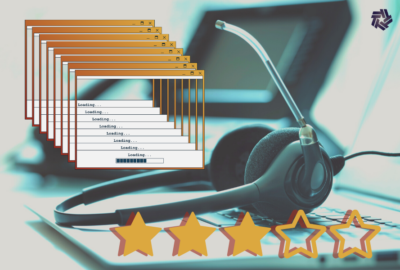NOAA leans on the lessons of others to move to cloud
The agency moved 25,000 employees to Google apps for email and collaboration in the cloud. CIO Joe Klimavicz said GSA\'s experience was crucial in making their ...
wfedstaff | June 4, 2015 5:03 pm
When the National Oceanic and Atmospheric Administration decided to move its email system to the cloud, it went looking for help in making the transition.
NOAA didn’t hire an expensive contractor or consultant. Rather, Joe Klimavicz, the bureau’s chief information officer, called Casey Coleman, the General Services Administration’s CIO, for assistance.
Coleman led GSA’s move to Google apps in the cloud and Klimavicz said it made sense to borrow and build on her experiences.
“GSA was great in this process,” Klimavicz said. “They were a little bit ahead of us so we reviewed their documents. And Casey’s office spent lot of time with us, going through our requirements documents and training materials.”
NOAA completed moving 25,000 emails boxes to the cloud Dec. 12. Klimavicz said the change over from 19 email systems went much smoother than he could have ever expected.
“The transition happened over a period of a couple of months, through one earthquake and two hurricanes,” he said. “We completed it on time and on budget. Less than one percent of all employees had any issues so it was a very successful migration.”
Klimavicz said NOAA’s help desk received 129 trouble tickets in the first week after the transition, which he said was “exceptionally low number given magnitude of change.”
The move to Google Apps will help NOAA avoid spending about $12 million. Klimavicz said to build and host the email system in house, NOAA would have spent about $23 million. The cost to move and for operations and maintenance in the cloud is $11 million. “It’s not only a lot cheaper, it’s a lot faster and a lot more flexible,” he said.
Klimavicz said NOAA’s experience provides a number of lessons learned for other agencies who are moving their email systems to the cloud.
He said the biggest lesson NOAA learned is there can never be enough communication.
“We offered a lot of training, both in person and online courses. But we made it optional and if I would do it again, I’d have made it mandatory because it would have made the transition easier,” Klimavicz said. “The other thing I’d do is have a large number of program staff on hand during the transition itself. We knew this was an issue to have on-site training support, but in the end, we didn’t have enough compared to other organizations. It’s important to get staff trained early so they have time to become experts.”
Klimavicz also recommended building an exit strategy upfront and defining not only the agency’s security requirements, but also that the cloud provider must hold all data in the United States.
“We defined our exit strategy in performance work statement upfront,” he said. “We can get our data back at anytime. We have about 36 terabytes of data so I may not want that delivered to my infrastructure, but maybe to someone else’s.”
Now that NOAA’s email is in the cloud, Klimavicz said he is focusing a set of new priorities.
He said among his top priorities is using the NOAALink contract to modernize the agency’s network infrastructure and implementing enterprisewide share services.
Klimavicz also said he wants to expand the reach of NOAA’s cyber center to monitor all the devices on the network. Currently, the center watches over about 4,000.
RELATED STORIES:
NOAA’s Klimavicz keeps systems primed, ready to handle disaster needs
With email migration done, GSA turns to other cloud services
Copyright © 2024 Federal News Network. All rights reserved. This website is not intended for users located within the European Economic Area.
Jason Miller is executive editor of Federal News Network and directs news coverage on the people, policy and programs of the federal government.
Follow @jmillerWFED







